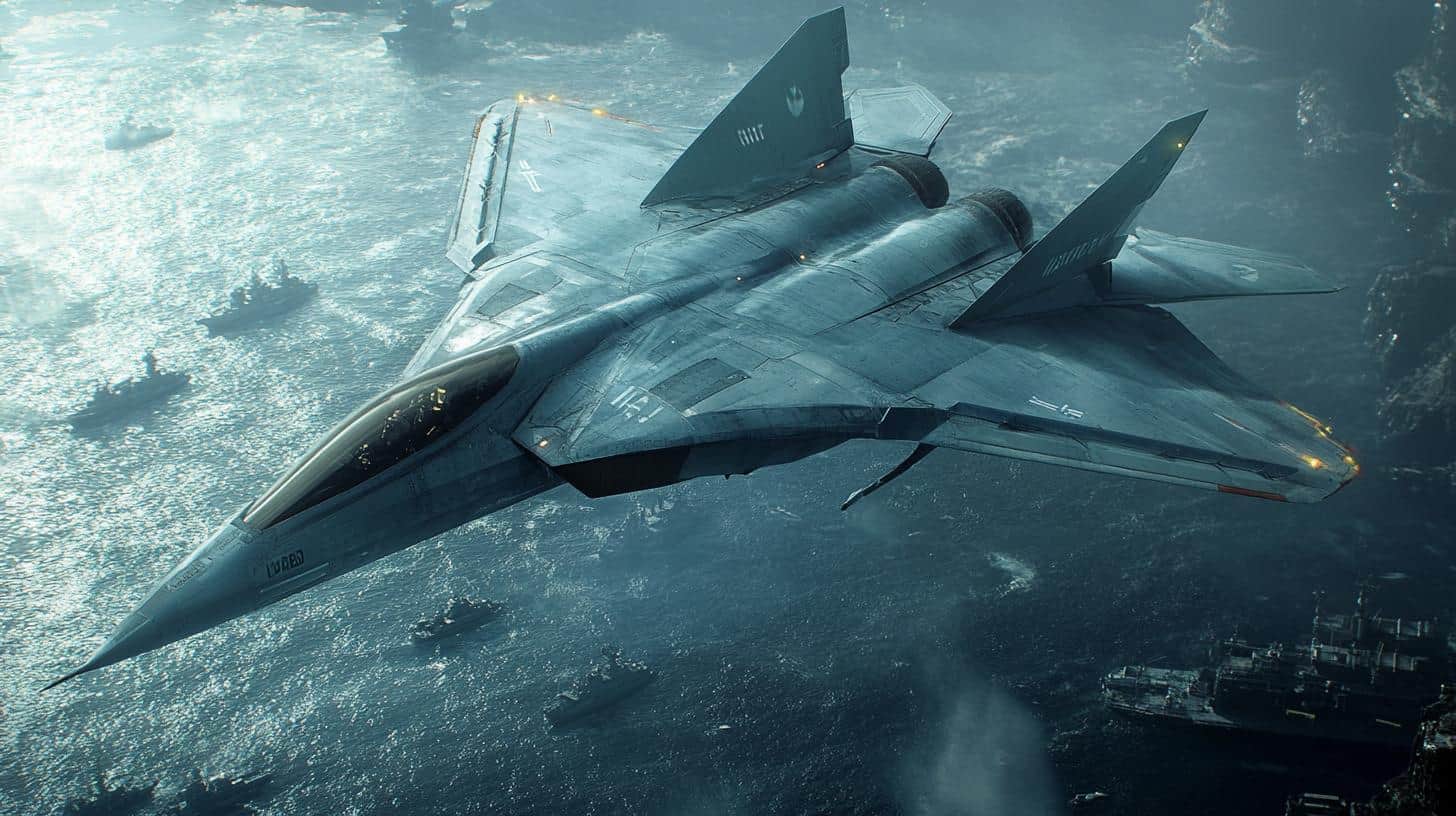In recent developments, the Navy is spearheading advancements in future air combat with the anticipated introduction of the sixth-generation F/A-XX platform. This new aircraft promises enhanced capabilities such as advanced sensors, superior range, and the ability to work in tandem with manned and unmanned systems. Unlike the Air Force, which has temporarily shelved its Next Generation Air Dominance (NGAD) manned fighter program due to prohibitive costs, the Navy remains cautiously optimistic about integrating advanced technologies without compromising on operational flexibility.
The Navy’s approach diverges from the Air Force’s increasing reliance on affordable stealth drones capable of undertaking missions traditionally assigned to manned aircraft like the F-35 and F-22 Raptor. While the Navy is still assessing drones’ effectiveness, particularly on aircraft carriers, it has begun deploying the MQ-25 Stingray as an unarmed tanker and experimental drone to refine its operational strategies in maritime environments.
While the F/A-18 fleet continues to shoulder significant responsibilities aboard carrier decks, their longevity is limited. In response, the Navy is procuring fifth-generation F-35C jets, though these aircraft do not entirely match the F/A-18’s versatility. The planned F/A-XX aircraft aims to bridge this gap and secure the Navy’s tactical edge while maintaining readiness should unmanned technologies prove viable.
Meanwhile, the Air Force’s willingness to explore drone synergies provides it with fallback options, including potentially adopting the Navy’s F/A-XX design if necessary. This symbiotic planning between the services emphasizes ensuring that the United States remains at the forefront of air warfare capabilities.
The Impact of Transformative Military Technologies on Society and Geopolitics
In recent years, advancements in military technology have made headlines for pushing the boundaries of what is possible in air combat. The U.S. Navy’s initiative to develop the sixth-generation F/A-XX fighter jet is one of the most significant developments, promising to revolutionize air superiority in modern warfare. These advancements are not merely military concerns; they have profound implications for societies, economies, and geopolitical dynamics worldwide.
Transforming Lives and Communities
The integration of cutting-edge technologies into military platforms can have a substantial ripple effect on civilian life. For one, defense innovations often make their way into the commercial sector, driving advancements in areas such as aviation technology, materials science, and telecommunications. This flow of technology can lead to job creation in high-tech sectors, foster innovation, and stimulate economic growth.
Moreover, as military technologies evolve, so do the skill sets required to develop, maintain, and operate them. This necessitates a workforce trained in advanced engineering, cybernetics, and artificial intelligence, presenting educational institutions with challenges and opportunities to equip the next generation with the necessary expertise.
Geopolitical Ramifications
Advancements like the F/A-XX fighter have significant geopolitical implications, influencing global power balances. As countries strive to keep pace with technological developments, there is a constant race to not only match but exceed rivals’ capabilities. Nations with the technological superiority can assert greater influence on the world stage, shaping global policy outcomes and deterrence strategies.
However, this technological arms race also breeds controversies and ethical debates. Issues of espionage, intellectual property theft, and cyber warfare become more pronounced as nations vie for dominance. This competition could escalate tensions in already volatile regions, raising concerns about global security and stability.
Controversies and Ethical Concerns
The integration of manned and unmanned systems in warfare, as seen with the Navy’s operational strategies for the F/A-XX, brings forth ethical dilemmas. These technologies challenge traditional norms of combat and raise questions about the human role in warfare. The prospect of autonomous drones conducting operations without human intervention is particularly contentious, prompting discussions about accountability, decision-making, and the moral implications of robotic warfare.
At the same time, the heavy financial investment required to develop advanced military platforms can strain national budgets, causing public debates about spending priorities. Citizens may question whether resources allocated to defense might be better spent on healthcare, education, or infrastructure.
Future Prospects and Global Dialogue
As nations forge ahead with innovations in military technology, there is an increasing need for international dialogue and cooperative frameworks to manage these advancements responsibly. Establishing norms and agreements on the use and development of such technologies is essential to mitigate risks and prevent conflicts.
In conclusion, the development and deployment of advanced military technologies like the F/A-XX aircraft have far-reaching effects that extend well beyond the battlefield. They impact economies, influence global power dynamics, and provoke ethical considerations that societies must navigate carefully. As we embrace these technologies, a balanced approach that addresses their advantages and challenges is crucial for ensuring a secure and prosperous future.
For further reading on advancements in military technologies and their global impact, visit the official websites of Defense Advanced Research Projects Agency (DARPA) and RAND Corporation.







